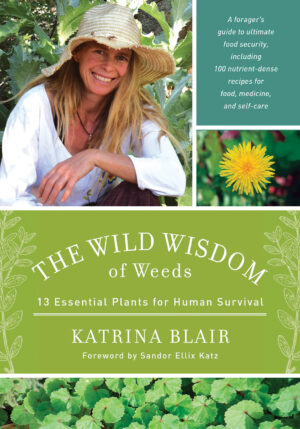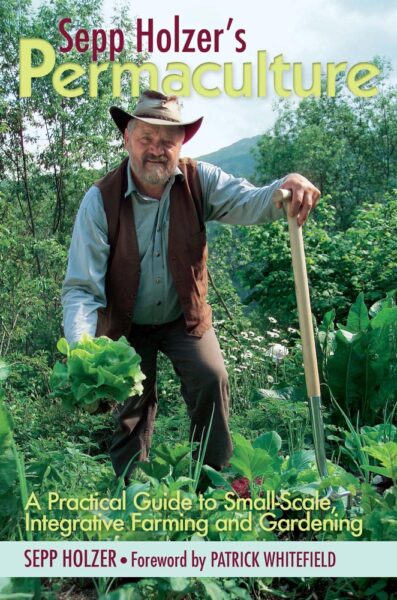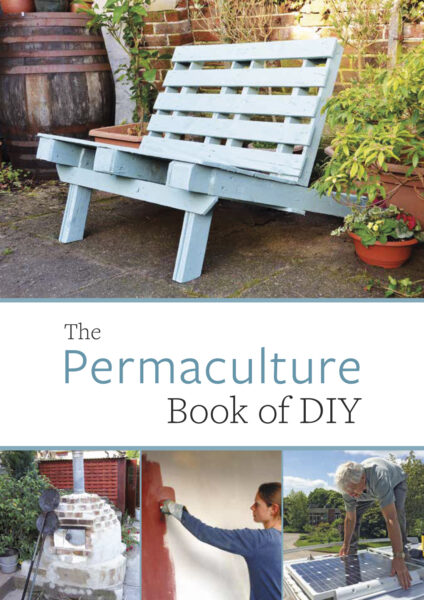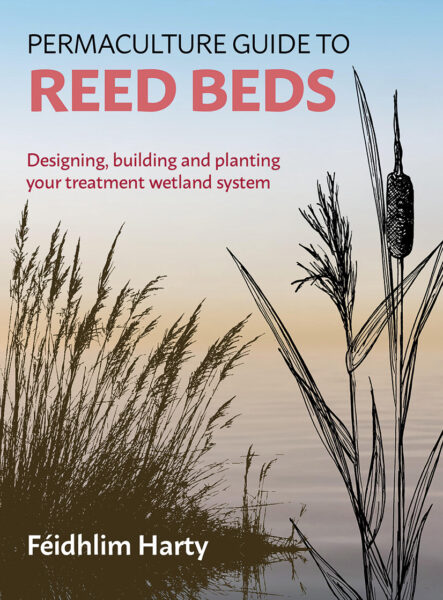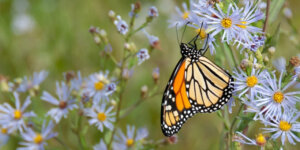Abundant Kudzu: Uncovering the Many Uses
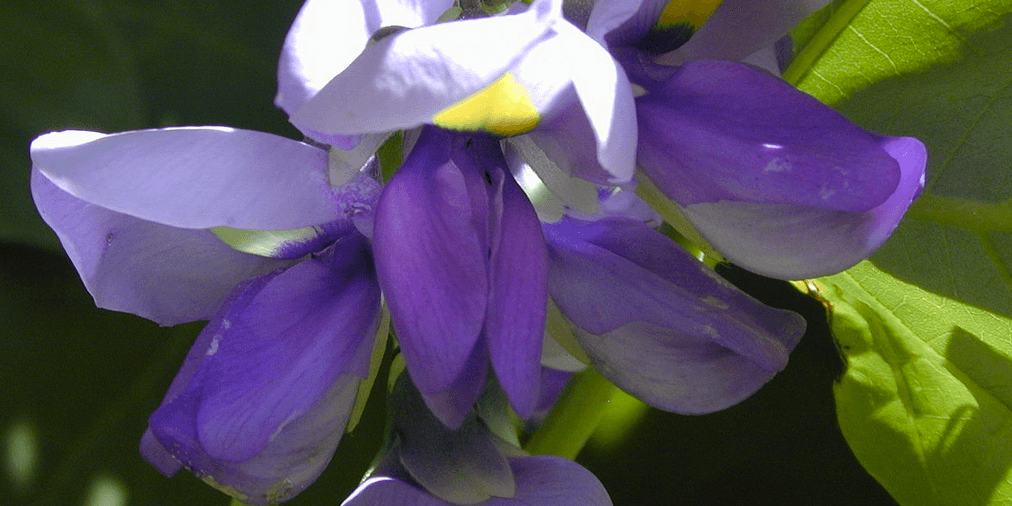
Tao Orion, author of Beyond the War on Invasive Species, and Katrina Blair, author of The Wild Wisdom of Weeds, share alternative approaches to understanding and managing Kudzu.
Classification: Pueraria lobata
Geographic location: Southeast
Description: Kudzu is a group of plants that are climbing, coiling, and trailing perennial vines. The plant climbs over trees or shrubs and grows very rapidly. Each leaflet is large and ovate with two to three lobes each and hair on the underside.
Could Kudzu be Used in Place of Alfalfa?
By Tao Orion
Kudzu is a long-lived perennial nitrogen fixing plant. Pollinators of all kinds love its prodigious lavender blooms, which yield a deep purple honey. It is edible and medicinal for both people and other animals.
It can grow up to one foot per day, its vines stretching to over forty feet in length in a single growing season.
Kudzu is now considered an invasive species in the southeastern US, though the Soil Conservation Service once paid farmers in the area to plant it to stabilize erosion-prone slopes and add fertility to depleted soils.
When it comes to management, kudzu’s rapid vegetative growth can seem daunting, but consider what that growth represents in the context of another important perennial legume – alfalfa.
Anyone that keeps dairy animals knows how necessary – and how precious – alfalfa is to keeping their animals satiated and their milk production consistent, especially if you’re feeding little or no grains.
In contrast to kudzu’s prolific and seemingly unstoppable growth, alfalfa production (at least in the conventional context) requires significant inputs of water to keep it producing in the hot, dry desert ecosystems where it thrives.
Farmers in California’s Imperial Valley grow nearly 2 million pounds of alfalfa every year, irrigated by water piped in at enormous ecological and economic cost from the Colorado River.
Farmers in Oregon’s Klamath Basin produced nearly twice that amount, on what was once one of the world’s largest wetlands and a critical stopover point for birds migrating along the Pacific Flyway.
And, since the 2011 Supreme Court ruling that allowed the distribution of Round-Up Ready alfalfa, an estimated 60-90% of conventional alfalfa farmers in the US have transitioned to this seed/chemical technology in the hopes of boosting production.
Meanwhile, two thousand miles away in Georgia, land managers spray Round Up on kudzu in the attempt to keep its prolific growth – which requires no supplemental irrigation or pesticides of any kind – in check.
In a world of increasingly interconnected problems emerges a unique opportunity for an integrated solution. Kudzu and alfalfa share a similar nutritional profile in their vegetation – their leaves and stems are 16-18% protein.
In the southeastern US, the prolific growth of kudzu could represent the beginnings of a thriving small-scale grain-free dairy industry in the region, with smallholders carefully managing land covered in kudzu to raise healthy animals free from outside protein inputs.
With careful management, the land could either continue to produce kudzu in perpetuity, or could be transitioned to other plants or crops that would thrive in the soil enriched by both manure and the nitrogen-rich soil left behind by the kudzu.
Using Kudzu to Make Land More Fertile
By Katrina Blair
Back in the 1800’s Kudzu was marketed in this country as an ornamental to shade porches, and utilized as a high protein fodder for cattle as well as a cover crop to prevent soil erosion.
In the 1930s and 40s the U.S. government subsidized farmers to plant an estimated 3 million acres of kudzu to help combat soil erosion from poor farming practices.
Yet, in the 1990s it was placed on the Federal Noxious Weed List.
What happened? Why is this former wonder-plant suddenly a problem? Is there a problem? Is the problem kudzu, or is the problem that we are spraying toxic herbicides on a valuable plant? Are we overlooking the great uses and benefits of what kudzu has to offer humanity?
It is time to focus on moving forward from where we are and research all the amazing uses of this excessive resource. Kudzu is a high protein food not only for animals but for humans too.
The leaves, young shoots, roots, flowers, and vine tips are all edible either raw or cooked. In addition, it is an amazing mulch–it gives nitrogen back to the soil and increases the fertility of the lands.
What non-renewable resource can kudzu replace?
Can it help us create energy for powering our civilization? Can it reduce the amount of food we import from other countries? Can it still provide a source of fodder for livestock? Can it replace GMO corn for this use?
Can it provide nutrients for deficiencies in our youth resulting from an excessive diet of highly processed foods? “Yes” is the answer to all these questions.
Together with good intentions and collaborative creativity we can partner with this plant and others to make a difference. We start by placing one foot in front of the other, gaining the momentum to improve quality of life for all beings.
Image credit: “Starr 021012-0067 Pueraria montana var. lobata” by Forest & Kim Starr. Licensed under CC BY 3.0 via Wikimedia Commons – https://commons.wikimedia.org/wiki/File:Starr_021012-0067_Pueraria_montana_var._lobata.jpg#/media/File:Starr_021012-0067_Pueraria_montana_var._lobata.jpg
Recent Articles
For too long, bugs have had a negative connotation associated with them. But what if we took the time to observe the benefits of insects? It’s time to rebug our gardens, lawns, and parks! The following is an excerpt from Rebugging the Planet by Vicki Hird. It has been adapted for the web. Adding Bugs:…
Read MoreAsparagus is a delicious vegetable with a layered history. How did this aspiring spear make its way from growing in the wild to appearing on our plates? The following is an excerpt from the The Seed Detective by Adam Alexander. It has been adapted for the web. “Nature gives us the key to every secret…
Read MoreInterested in growing trees? Here are some tips on successfully planting, transplanting, and pruning trees to create a flourishing forest garden! The following is an excerpt from The Home-Scale Forest Garden by Dani Baker. It has been adapted for the web. Planting Potted Trees and Shrubs If you order potted trees, check with your supplier to…
Read MoreChances are, you’ve seen cattails growing on the edge of your local lake or stream at least once or twice. Instead of just passing these plants, try foraging for and cooking them to create delicious seasonal dishes! The following excerpt is from The New Wildcrafted Cuisine by Pascal Baudar. It has been adapted for the…
Read MoreWith the right strategies and practices, composting on a small farm is surprisingly easy and inexpensive. Just follow these steps for making compost, and your farm will be thriving in no time! The following excerpt is from The Lean Farm Guide to Growing Vegetables by Ben Hartman. It has been adapted for the web. (All photographs by Ben…
Read More

